|

| |
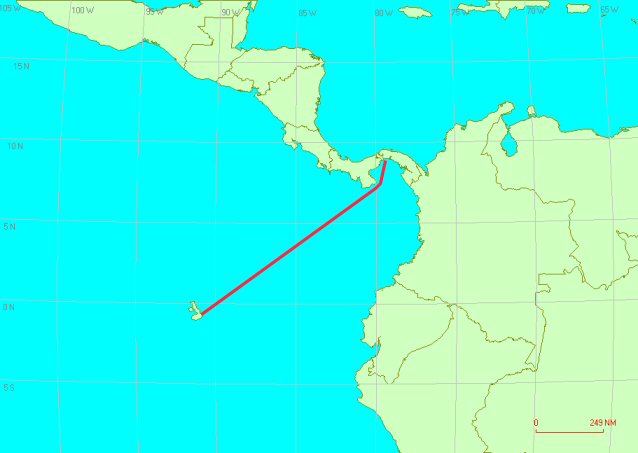
07/02/2008
Repair Jobs and the Panama Canal...
The last two weeks have been frantic: after our arrival in Shelter Bay, we had
to immediately tackle the essential repairs to the boat after the knockdown.
Especially critical, the repair to the crosstrees, which required the
replacement of some parts: luckily we found a Canadian liveaboard who does
rigging jobs and was able to source the spares and do the job in few days!
In parallel, we worked at cleaning all the wet stuff inside the boat and
repairing the electric circuits and the electronic instruments that were not
working anymore: frustrating job, with a lot of devices irretrievably damaged
and all switches on the main switchboard which are progressively failing.
In the end, just the day before the scheduled Panama Canal transit, we managed
to have the main electronic instruments back to work; we still have to find a
solution to repair or replace the shredded sprayhood and the cockpit floor which
was lst at sea.
The Rally organisation takes all the skippers
(in our case Baby, as I'm too busy doing repairs) to see the Panama Canal in
operation: seeing ships passing with few centimeters to spare is rather
impressive!
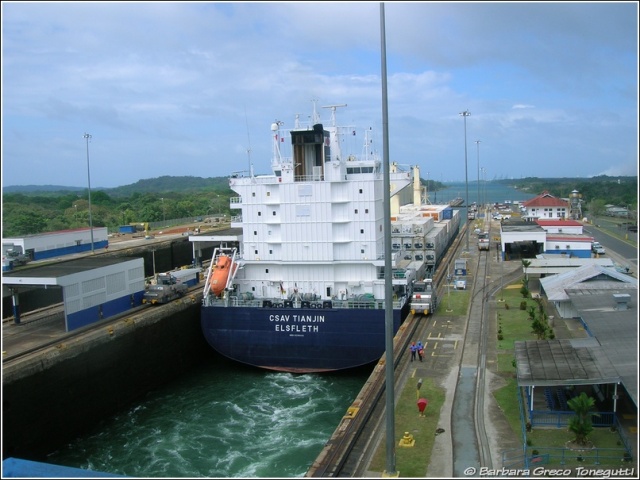
A ship transits through the Gatun locks; in few
days, we will do the same!
Sunday 27th of January, we depart for the Canal! The Rally yachts will transit
in two groups of 15 boats each, rafted in groups of 3.
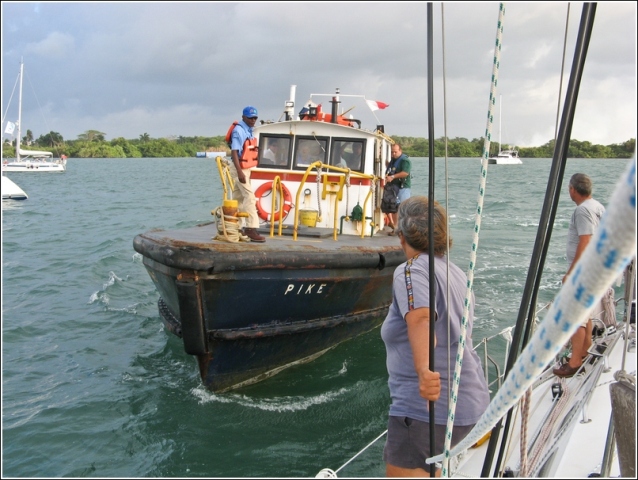
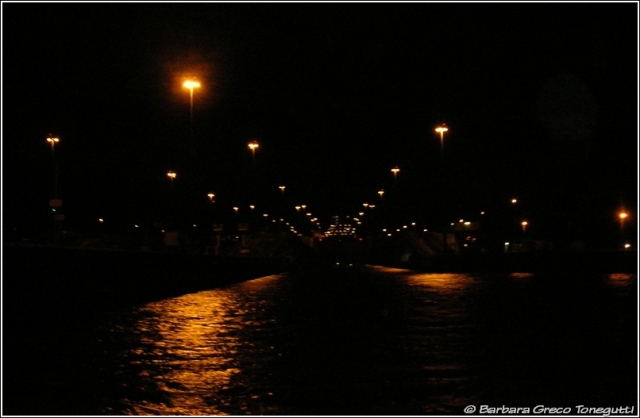
(left) our pilot arrives and (right) we reach the Gatun
locks in pitch darkness! (can you see the ship entering the lock? we neither!)
We reached the first lock when it was dark, rafting-up and then entering the
lock was not easy and an heavy rain-shower made things unpleasant as well! All
well anyway, and we spent the night at anchor in the Gatun lake which
constitutes the central part of the Canal.
Wake-up at dawn to receive a new pilot and the proceed across the Lake towards
the Pedro Miguel locks and then the Miraflores locks which open their gateway to
the Pacific Ocean. In daylight, all seems much easier!
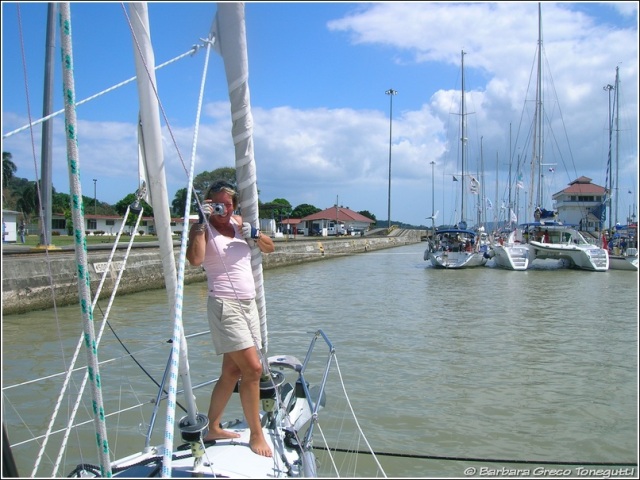
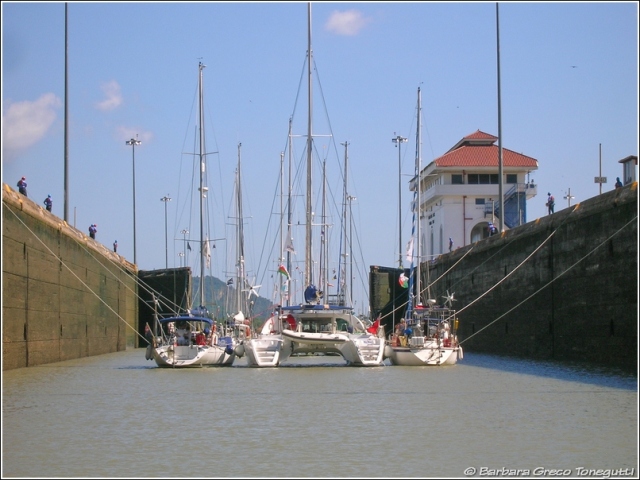
Dorothy of yacht "Neva", one of our volunteer
line-handlers, takes a picture while entering the Pedro Miguel lock
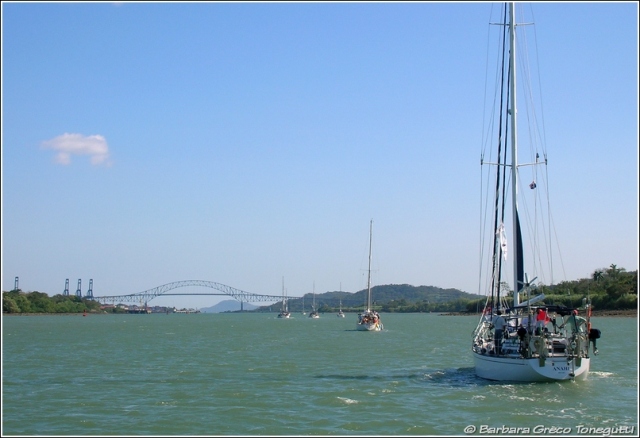
The Bridge of the Americas welcomes us into the Pacific Ocean!
We reach Flamenco Marina (dirty, noisy and expensive!) where we will spend a few
days to complete as much as possible the repair works: the Galapagos islands are
waiting us, and from there the crossing of the Pacific Ocean to the Marquesas
islands.
In THIS PAGE you'll find the Video of
the Canal Transit
11/02/2008
TIDAL INTERNET?...
Flamenco Marina, besides being very expensive and dirty, is the location of
another natural phenomenon: the internet connection which is subject to the
tides!
In fact here the tide excursion is large, about 5 meters, and when we are down
low the wi-fi signal does not reach us!
We will not have good memories of this place, although Panama was not bad and we
have been able to complete most repairs to Shaula3.
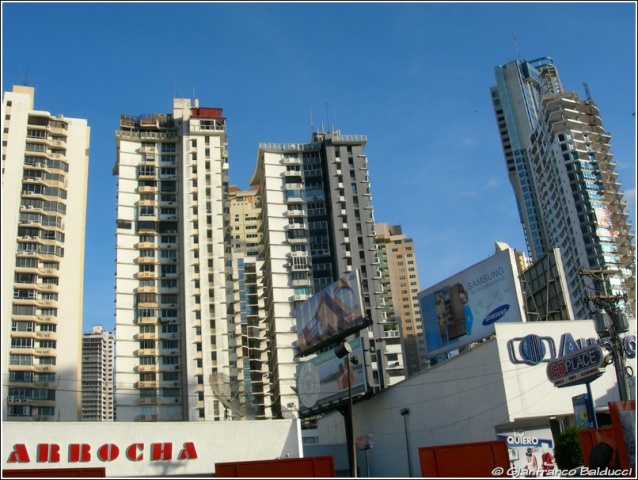 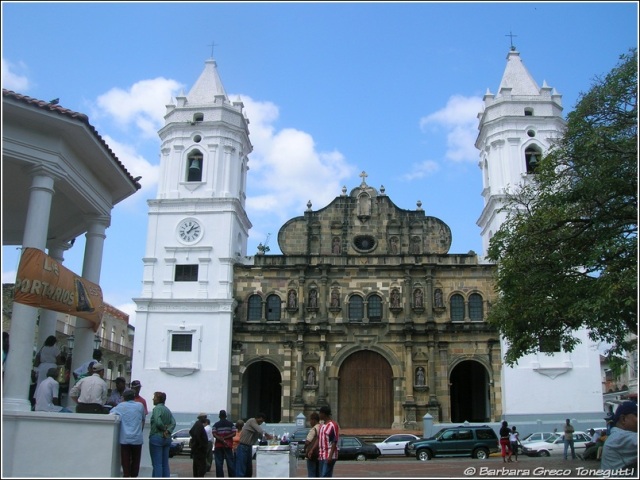
Panama City is full of high-rise building; a
great contrast with the old town, Barrio Antiquo (right)
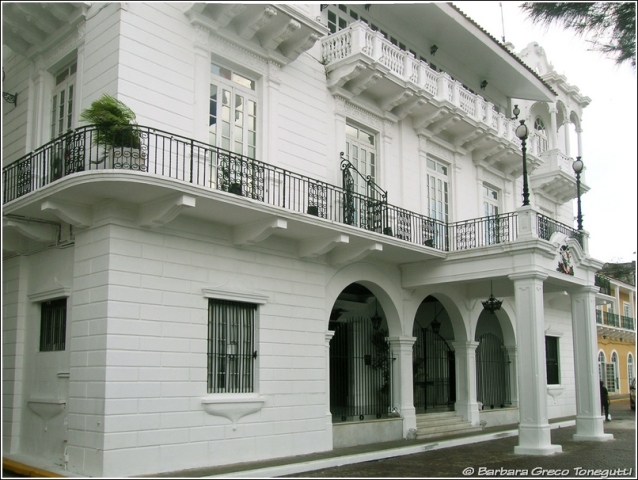
The well-guarded residence of the President of
the Panamian Republic.
Today we leave!
Next stop, the Perlas islands, where we plan to spend a day or two, and then a
week at sea to reach the much relished Galapagos islands!
20/02/2008
DOLPHINS, BOOBIES AND EMPERORS...
The passage to the Galapagos is turning out to be slow and tiresome, with
frequent very heavy rains, contrary winds and waves, and now also the current
that should be in our favour is flowing the wrong way!!
Luckily, before departure we rigged a makeshift sprayhood with a sheet of
cellophane taped to the missing sprayhood's frame: Baby dubbed it "the Emperor's
new sprayhood" because it cannot be seen and it works only if you believe it's
there....
Unlike some other crews, we saw very little wildlife, but we had two special
sightings:
- a pod of spotted dolphins goes in front of our bow and BANG! they jump all at
the same time 3 meters high out of the water: one of them, the funny guy, even
flips belly-up before crashing back in the water.
Thirty seconds, and they do it once more, then I go down to get the camera and
immediately they disappear!....
- a blue-beaked booby (there are 9 different species in the Galapagos) spends
the whole night, despite the torrential rain, doing landing practice on our
pulpit: it flies in straight line, slightly faster than us and gradually getting
alongside, then it opens the flaps (sorry, the tail feathers), lowers the
landing gear and very carefully reaches down for the pulpit. It stays there
until a wave splashes on its bottom, flies away and then repeats the whole
practice again.
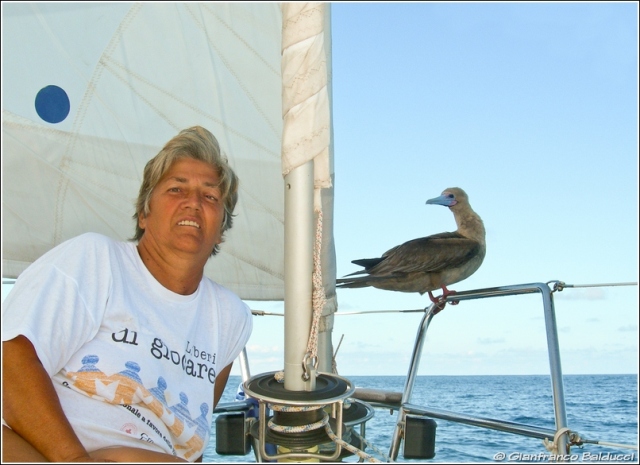
A blue-beaked booby hitches a ride towards
Galapagos.
26/02/2008
PTERODACTYLS?
30 miles from the Galapagos we were very anxious: the fuel gauge was reading
"zero" since an hour and although the cavalry was coming to the rescue (in the
form of "Kaimin", a Rally yacht which was coming towards us with a couple of jerrycans of
fuel) we were afraid of finishing the tank content before their arrival, with
the subsequent annoyance of cleaning filters, bleeding the circuit,
who-knows-if-it-will-restart and all that.
Suddenly, two triangular fins in the water: sharks?
Then, Baby sights what looks like a rock: not even the time to start worrying,
and the rock sinks, lifting in the air a huge tail: a whale!!
Another fin: shark, again? No, this time it's a seal basking in the sun, belly
up and waving hallo while we pass beside it.
More seals, this time a dozen or so, taking the sun few meters from us, and a
lot of sea turtles swimming towards the still distant islands.
They all look pretty much like a welcome party!!
Then, suddenly, nothing anymore. in the meantime the cavalry has arrived and we
can now proceed full-speed towards Puerto Ayora with our new 40 liters of diesel
oil sloshing in an almost-empty tank.
The harbour of Puerto Ayora is not very well sheltered but this is where we have
to stay: we drop two anchors fore and aft, and look the ENORMOUS pelicans that
seem to be the rulers here around.
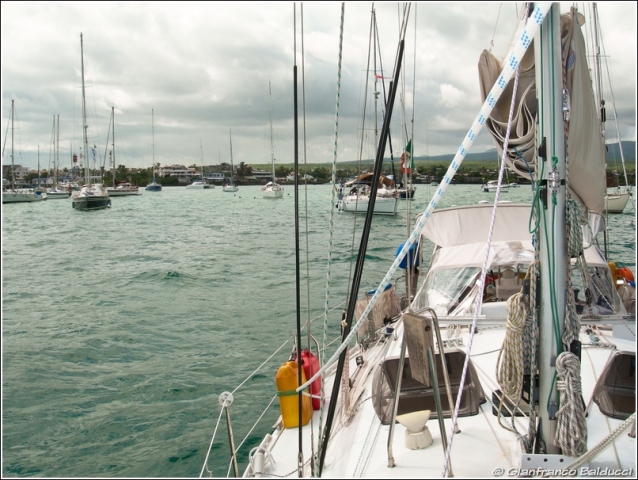
At anchor in Baya Academia, near Puerto Ayora, Santa Cruz
island
We have not yet seen iguanas or giant turtles, but there's plenty of time for
that!
09/03/2008
GALAPAGOS, GALAPAGOS!!
Right, the Galapagos: difficult to describe in few words!
Let's start from the islands: there are many, 5 or 6 large ones, up to 50-60 Km
across, and literally tens of smaller ones, islets as well as little more than
emerging rocks.
Only 4 islands are inhabited, and only on Santa Cruz, where Shaula was at anchor
in Academia bay, in front of the town of puerto Ayora, settlements cover an
important portion of the island and are not limited to the town itself.
There are no "natives", the islands were un-inhabited until they were discovered
in the 16th century by none the less than the Bishop of Panama, who was sailing
towards Peru and was brought here by the ocean currents (a bit off-course he was,
the Bishop!).
The inhabitants are almost all Equadoreans, many of them immigrated illegally in
search for work in the tourist industry or in farms: they made a lot of damage,
importing literally hundreds of life forms (insects, plants, animals) that did
not exist before in the Galapagos, but apparently the Equadorian government was
unable to do anything about it (or could not be bothered?).
They use the american Dollar as their own currency, and this is telling a lot
about the state of their economy....
Back in the 1930's there were some settlements from Europeans, many of them
Germans: notorious is the story of a baroness who installed herself and her two
(!) lovers in Floreana, causing quite some resentment from two other German
families who were already there, and then disappeared misteriously in a dark and
stormy night together with her two boyfriends. One of the two was later found
dead on a nearby island where apparently he arrived on a makeshift raft, and
also many of the members of the other two families died misteriously, apparently
poisoned.... '30s soap novels, indeed!
Main features of the local inhabitants: they have no idea what "timeliness" is,
and they are very keen at sucking as much money as possible out of tourists!
....but at least they are very kind, it must be said!
The islands are quite different from the image I had formed in my mind: they are
volcanic but originated in different periods, therefore some are still barren
while others had the time to be covered with some vegetation (typically,
mangroves on the shore, little trees on the hill sides and just bush on the
volcanoes).
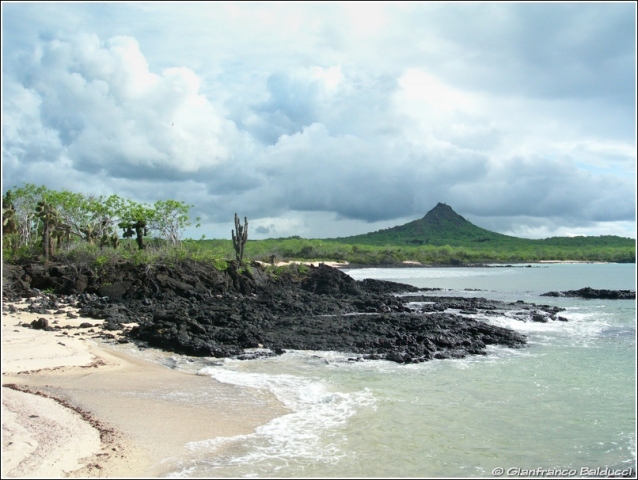
The northern shores of Santa Cruz island
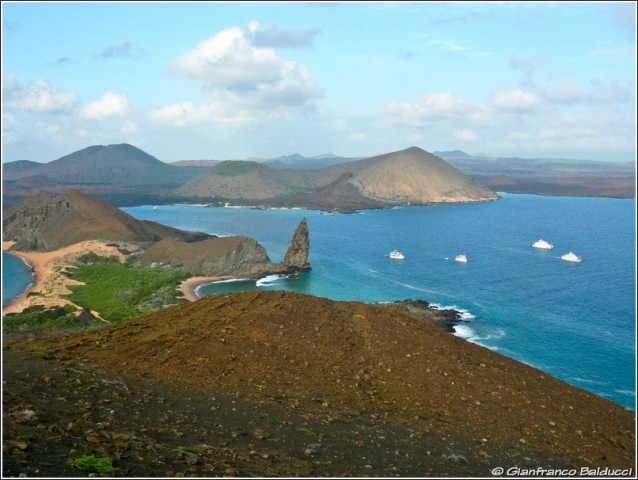
Isla San Salvador seen from the summit of Isla
Bartolomé
(and yes, you did see it before, remember the movie "Master and Commander"?)
Volcanic, therefore the ground is made of lava which may be of two types: flat
slabs which are very easy to walk on, and what they call the "A-A" kind (meaning
"ouch-ouch") that is all irregular and very tough to walk on...
Very few beaches, and typically steep and beaten by the waves.
The result, as seen from the sea, is that of a savage, unwelcoming land: rocky
shores, waves, and few beaches with a heavy swell: there are in fact some good
anchorages, which were frequented in the past by passing-by whaler ships and
today by cruise ships.
Wildlife, the main feature of these places:
On land, first of all, along all shores there are hundreds of sea-iguanas: they
bask in the sun or occasionally rush to the nearest sand patch to dig holes
where they will lay their eggs.
They swim, and are capable to dive down to 20 or even 30 meters to munch the
vegetation growing on the submerged rocks.
They are much smaller than I had figured, say 2-3 feet of which half is the tail.
Main problem for the tourist: they are the same colour of the ground, and they
defecate everywhere, so watch your steps!!
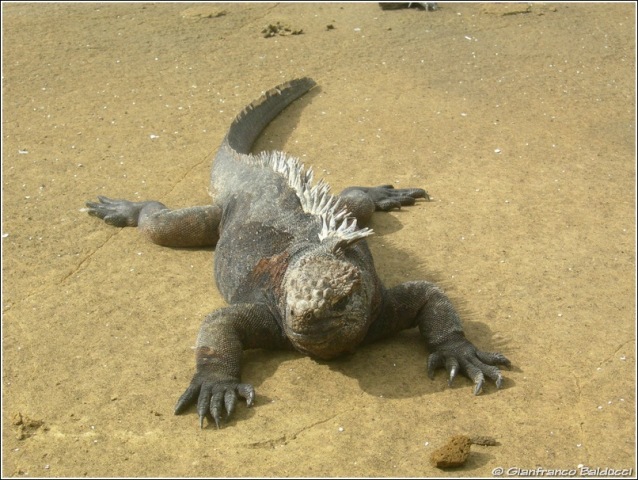
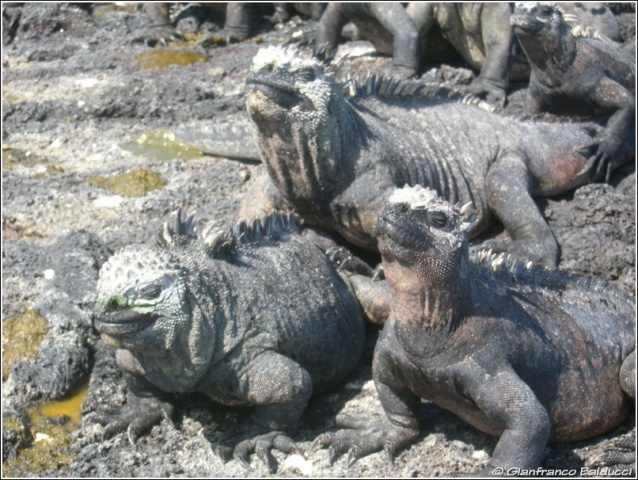
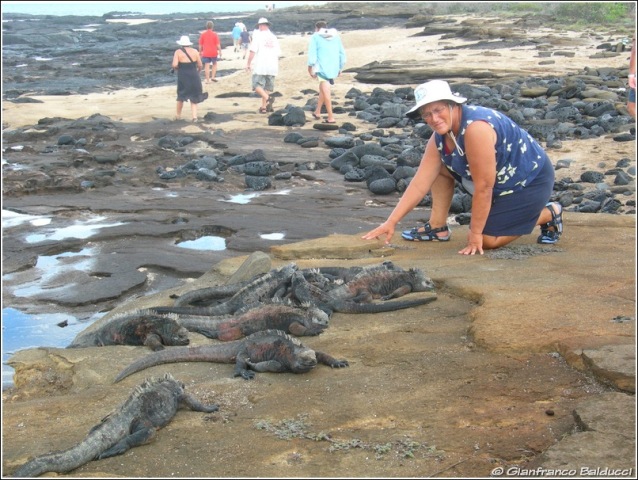
Inland, there are the land-iguanas: they are yellow instead of grey and, quite
the contrary to the sea variant, they are very territorial and prepared to fight
for their patch of land.
On the beaches but also along the rocky shores, sea-lions abound (sea lions and
not seals, the main difference is that they have visible ears): as soon as you
get close, they play dead, and they spend a lot of time sleeping in odd, funny
positions.
We met them for the first time at the boarding station to go onboard the cruise
ship: they were sleeping on the benches, in the shade, and did not care of the
presence of the people!
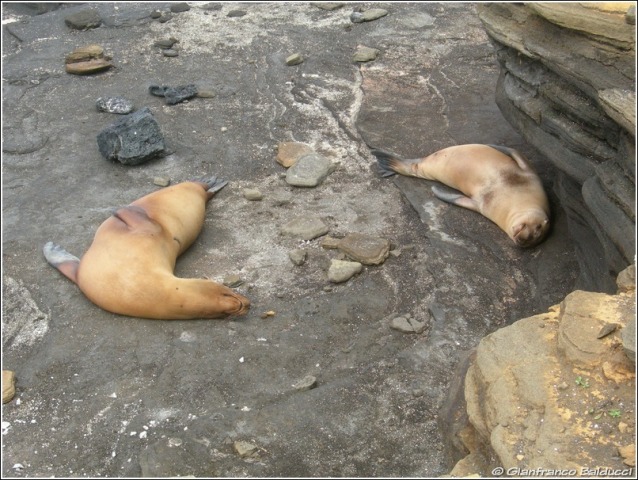
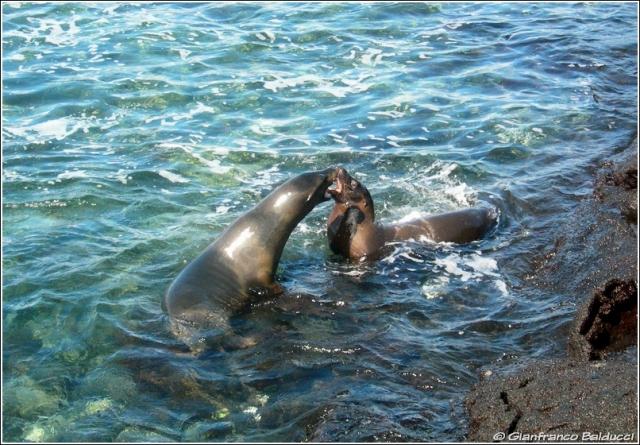
I forgot to mention the Galapagos
red crabs: big, garishly coloured and plentyful!
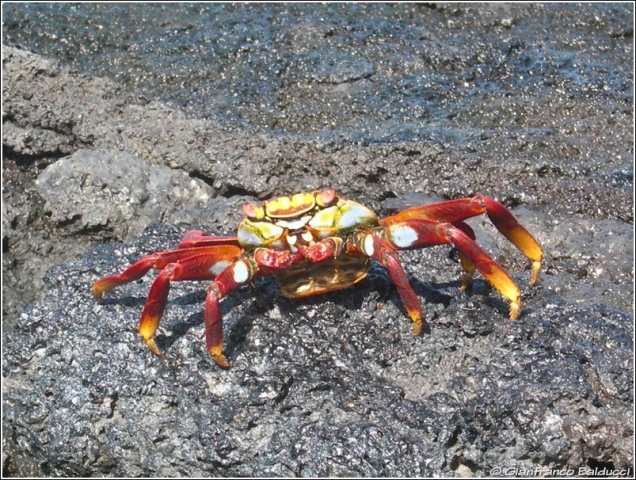
...and what about giant turtles? In fact, it's unlikely to see them in the wild,
because they live in remote areas, moslty uphill where tourists are not allowed
to go: the only one we saw were the ones kept in the Darwin Research Centre,
where they are nurtured before bringing them back to their islands.
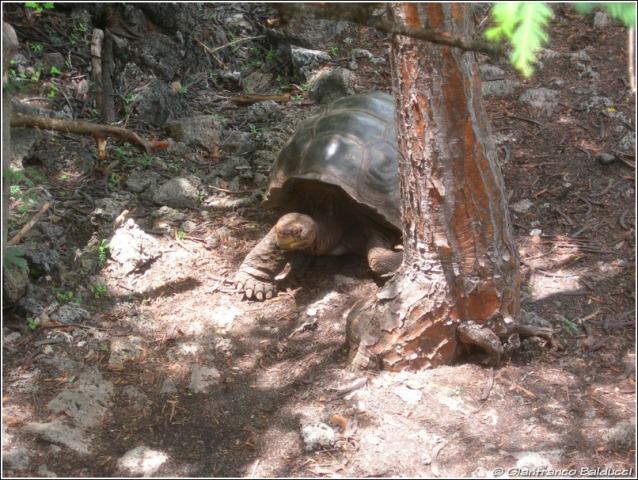
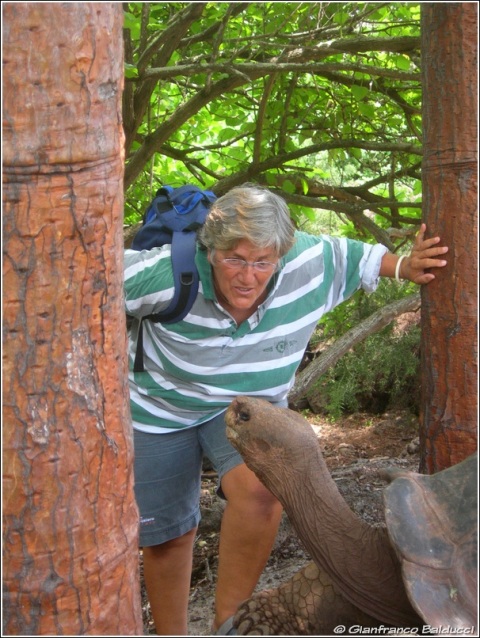
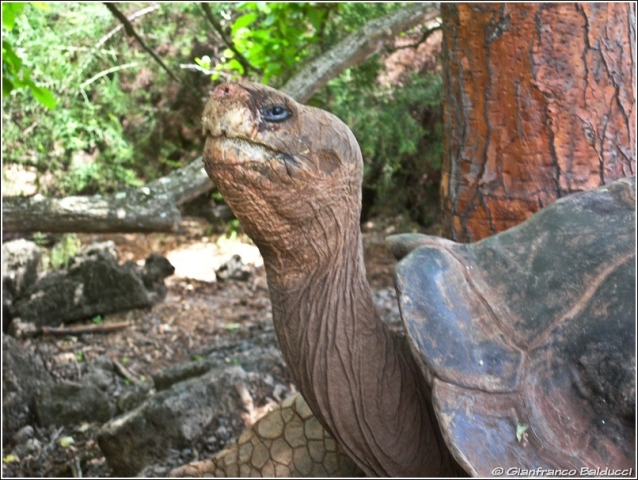
In the air as well as along all shores, birds of all kinds: the most
characteristic are the so-called "Boobies" ("piqueros" in Spanish). There are
three main variants: the "blue-footed boobies" that have indeed their beak and
feet of a bright blue color, then the "red-footed boobies" whose beak is blue
and the feet are bright red (they fly well offshore and are seldom seen on the
beaches) and the "standard" boobies of which nobody cares!
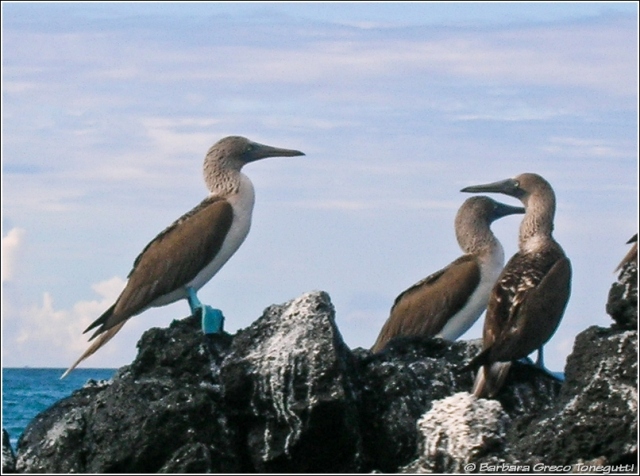
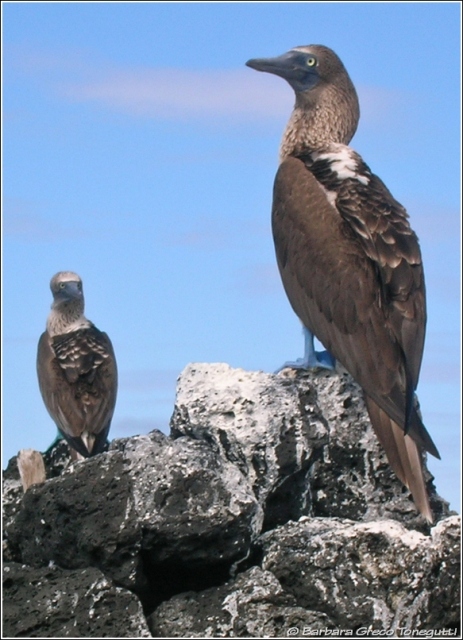
They have a vaguely dumb look that makes them the tourists' favourites, quite
unlike the Frigates that are magnificent birds but look positively as the "bad
guys" (and in fact they are very aggressive).
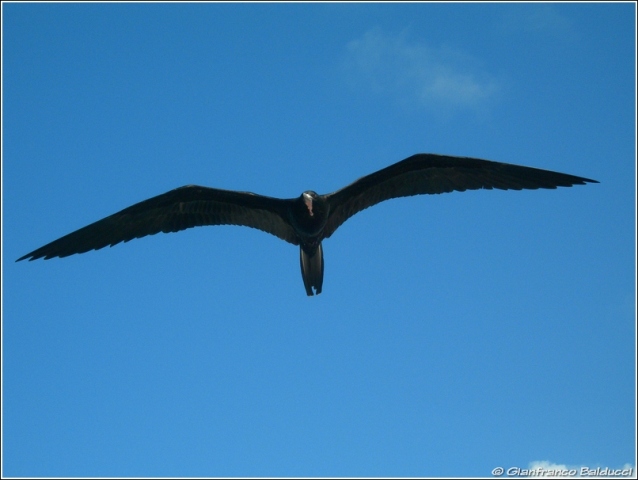
We saw very few of the Galapagos Albatross: funny birds, expecially when they
court the females doing a sort of fencing with their beaks. We had a couple
flying around Shaula for hours, and they seemed to communicate by means of
rattling sounds made with their beaks.
Last but not least, the pelicans: they are HUGE beasts that fly retracting their
long necks so that the head seems directly attached over the body making them
look definitely like Pterodactils.
They fly in line, up to 10 birds evenly spaced 2-3 meters one after another, and
when they dive for fish they look like a crash-landing (actually, they do not
dive: the body remains on the surface and only the head goes down).
Quite unlike the boobies, that dive in straight line from high above and plunge
straight under water where they spend several seconds before coming up.
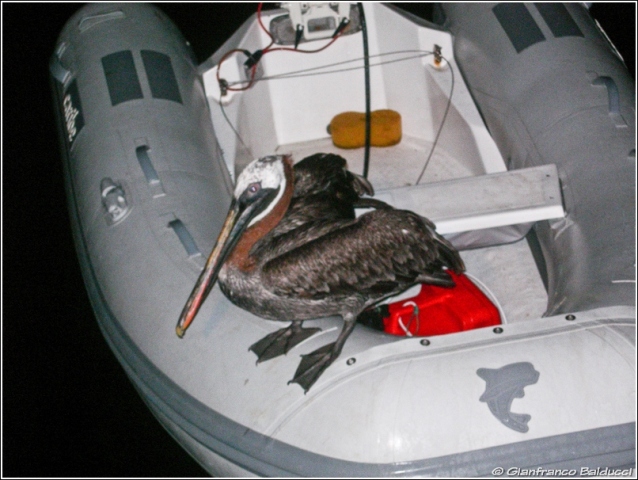
In Galapagos all species are bigger than elsewhere, pelicans are
no exception!
By comparison, the sea life has been disappointing: the water was murky due to
the swell, and the snorkeling trips were very disappointing for us, although we
heard other crews that were more lucky.
The most notable in this area should be the hammerhead sharks, positively
dangerous beasts that some crew managed to see from a distance, while we had to
content ourselves with the baby sharks that were swimming under our boat in the
Puerto Ayora anchorage!
CONTINUE
READING...
|